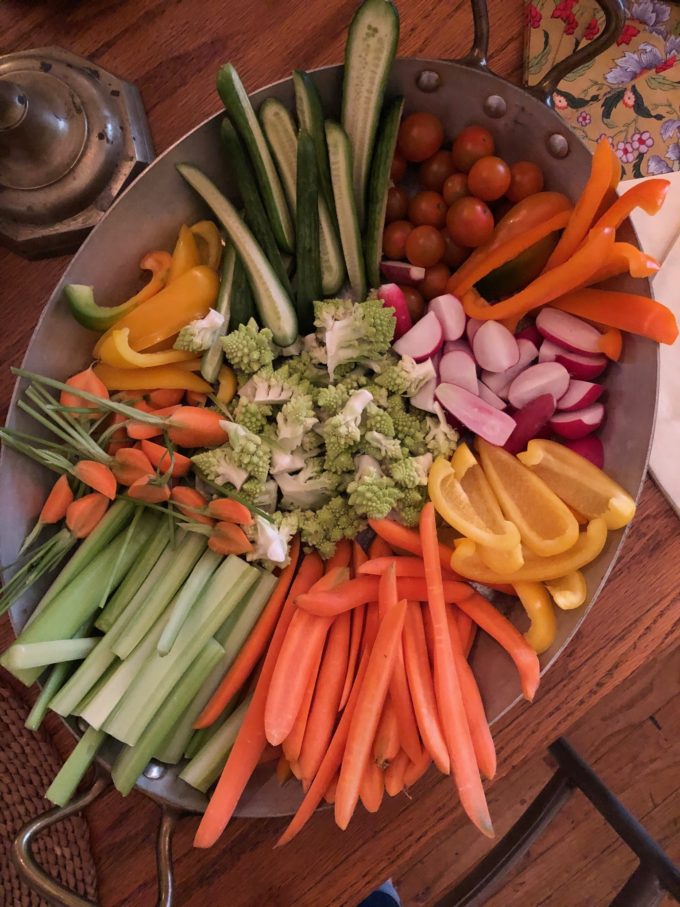
The thing about carbohydrates is not all carbohydrates are created equal. (Not all proteins or fats are created equal either, but let’s save that for another blog post.) Carbs come in every variety, from very health enhancing to less so. That’s why any diet that banishes them entirely will, yes, cut out a good amount of play food. But it will also lead you to miss out on lots of important nutrients (honestly, the details of which don’t matter), and unnecessarily eliminate foods that are truly enjoyable. So let’s break them down…
What foods contain carbohydrates?
- Fruits
- Vegetables
- Whole Grains
- Legumes (aka beans and nuts)
- Dairy (this one surprises people sometimes but lactose is a carb)
- And every food derived from the above (e.g. juice, sugar derived from the sugar cane plant and all other caloric sweeteners, potato chips, breakfast cereals, snack foods like crackers and cookies, breads from white to whole wheat, pastas, etc.)
“Complex” carbs versus “simple” carbs
We’re often told to choose “complex” carbs (carbs that have three or more sugar units strung together) and to abstain from “simple” carbs (carbs made up of only one or two sugar units). But let me give you an example of why this blanket recommendation doesn’t work. White bread, made up of starch, is technically a “complex” carb. Apples, made up of glucose and fructose, are technically “simple” carbs. Few would argue that white bread is a healthier choice than an apple. It’s not.
White bread is made with white flour. White flour is made by removing the healthiest components of a wheat berry: the fiber, nutrient-filled bran and germ. What is left–the energy-filled endosperm–is then ground into a fine dust. Essentially, even before we take our first bite of toast, a great percentage of our bodies’ digestion has already been completed by outside processing. So the “complex” carbs in white bread are very readily absorbed and quickly converted into sugar in our blood streams, what doctor’s call blood sugar or blood glucose.
An apple is made from, well, an apple. When we eat it, besides the obvious fact that our teeth have more work to do to ready it for swallowing, our GI tracts also have to work harder to separate the “simple” carbs from the fiber, water and other nutrients packaged with them. This, among other reasons, leads to slower absorption and conversion of the “simple” carbs of the apple into blood sugar. Rest assured, our bodies will absorb all of the good stuff, it just takes more time. More time is a good thing.
Why it matters whether our blood sugar increases quickly versus overtime
Blood sugar fuels the activity of our bodies’ cells, but it can’t get into them without some help. Insulin, a hormone made by the pancreas, acts as a key to open up cell doors and let blood sugar in. Because our bodies don’t like a ton of sugar hanging out in our blood stream, a surge in blood sugar from foods like white bread leads the pancreas to release a corresponding surge in insulin. All of the sugar is quickly ushered out of our blood stream and into our cells. Before you know it, the highway that is our blood stream is free of sugar. This wouldn’t seem like a bad thing, but our bodies actually prefer there to be a little blood sugar traffic. If there is no blood sugar available to cells, what would happen if all of a sudden our bodies needed more energy? So, low blood sugar triggers additional hormonal responses in our bodies – hormones that make us hungry. This explains why most of us feel starved only a few hours after having a muffin for breakfast.
Alternatively, when we eat foods like apples that are full of nutrients like fiber that take longer to break down, our blood sugar rises slowly and steadily overtime. Correspondingly, our pancreas releases insulin slowly and overtime. There is a steady flow of light blood sugar traffic in our blood stream. When insulin moves some blood sugar into our cells, a little more blood sugar merges onto the highway from our GI tract to replace it. This translates to our blood sugar rising and falling slowly and overtime. Why is this so great? Our bodies tell us that they are satisfied for longer.
A better way to think about carbs
So, here is a clearer carb recommendation: Eat carbohydrate foods that have undergone as little processing as possible the majority of the time –
- Fruits
- Vegetables
- Whole Grains
- Legumes (aka beans and nuts)
- Low fat milk and yogurt
– and the ones made by processing them, less often –
- Juice, even smoothies
- All sugars from white to agave to honey
- Traditional snack foods like potato chips, pretzels, crackers
- Bakes goods like cookies, cakes, doughnuts
- Breakfast cereals
- Breads from white to whole wheat
- Pastas and white rice
- Etc.
The former are like time-release energy/fullness pills and the latter are like fast-acting energy/hunger-inducing pills. Maybe this means you choose to do an 80/20 split, or 90/10, that’s all up to you. The good news is there’s no good reason to give up carbohydrates.


